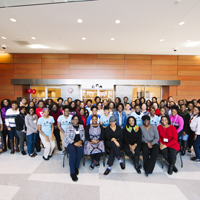Advanced Cyberinfrastructure for Science, Engineering, and Public Policy
The Computing Community Consortium (CCC) Convergence of Data and Computing Task Force responded to the National Science Foundation (NSF) Dear Colleague Letter: Request for Information on Future Needs for Advanced Cyberinfrastructure to Support Science and Engineering Research (NSF CI 2030) in April 2017. You can see their response here. Recently, the NSF released all the responses to NSF CI 2030 RFI.
This response led to the CCC’s Advanced Cyberinfrastructure for Science, Engineering, and Public Policy white paper.
From the white paper:
Progress in many domains increasingly benefits from our ability to view the systems through a computational lens. These advances would not be possible without the advanced data and computational cyberinfrastructure and tools for data capture, integration, analysis, modeling, and simulation. However, despite, and perhaps because of advances in “big data” technologies for data acquisition, management, and analytics, the other largely manual, and labor-intensive aspects of the decision-making process have become the rate-limiting steps to progress.
Advancing the capability and capacity for evidence-based improvements in science, engineering, and public policy requires support for:
- Computational abstractions of the relevant domains coupled with computational methods and tools for their analysis, synthesis, simulation, visualization, sharing, and integration
- Cognitive tools that leverage and extend the reach of human intellect, and partner with humans on all aspects of the activity;
- Nimble and trustworthy data cyber-infrastructures that connect, manage a variety of instruments, multiple interrelated data types and associated metadata, data representations, processes, protocols and workflows; and enforce applicable security and data access and use policies; and
- Organizational and social structures and processes for collaborative and coordinated activity across disciplinary and institutional boundaries.
Read the full white paper here.










